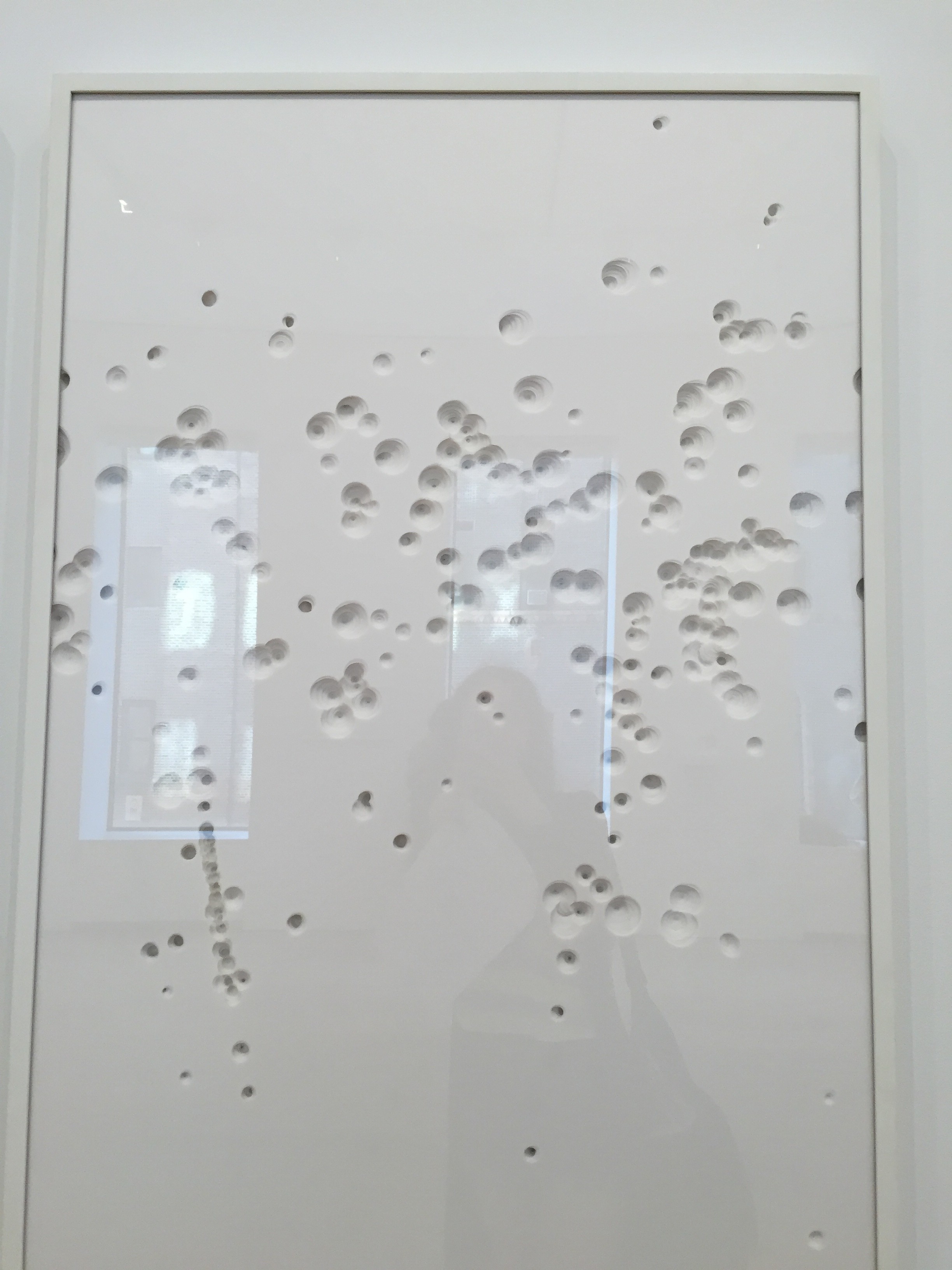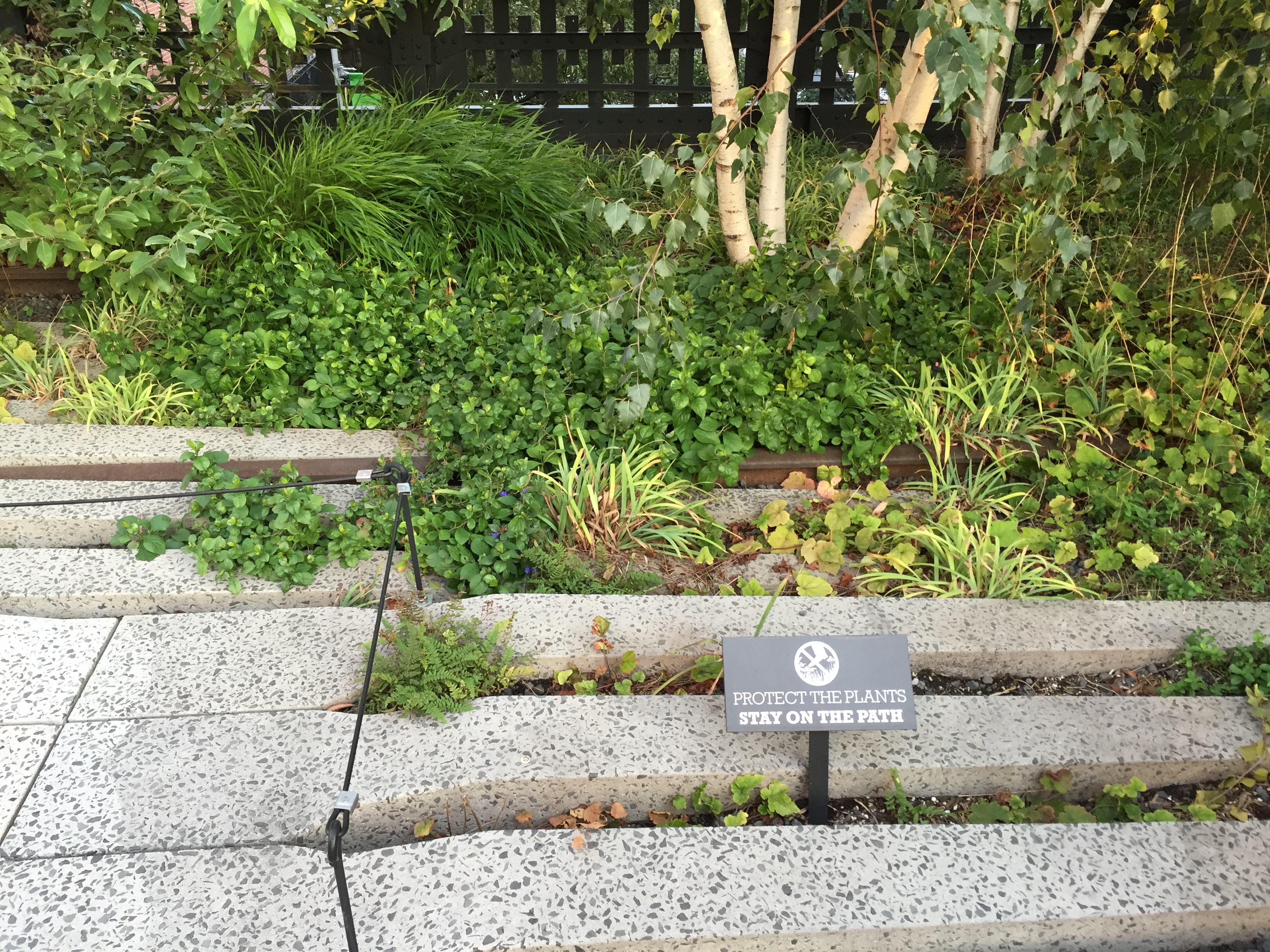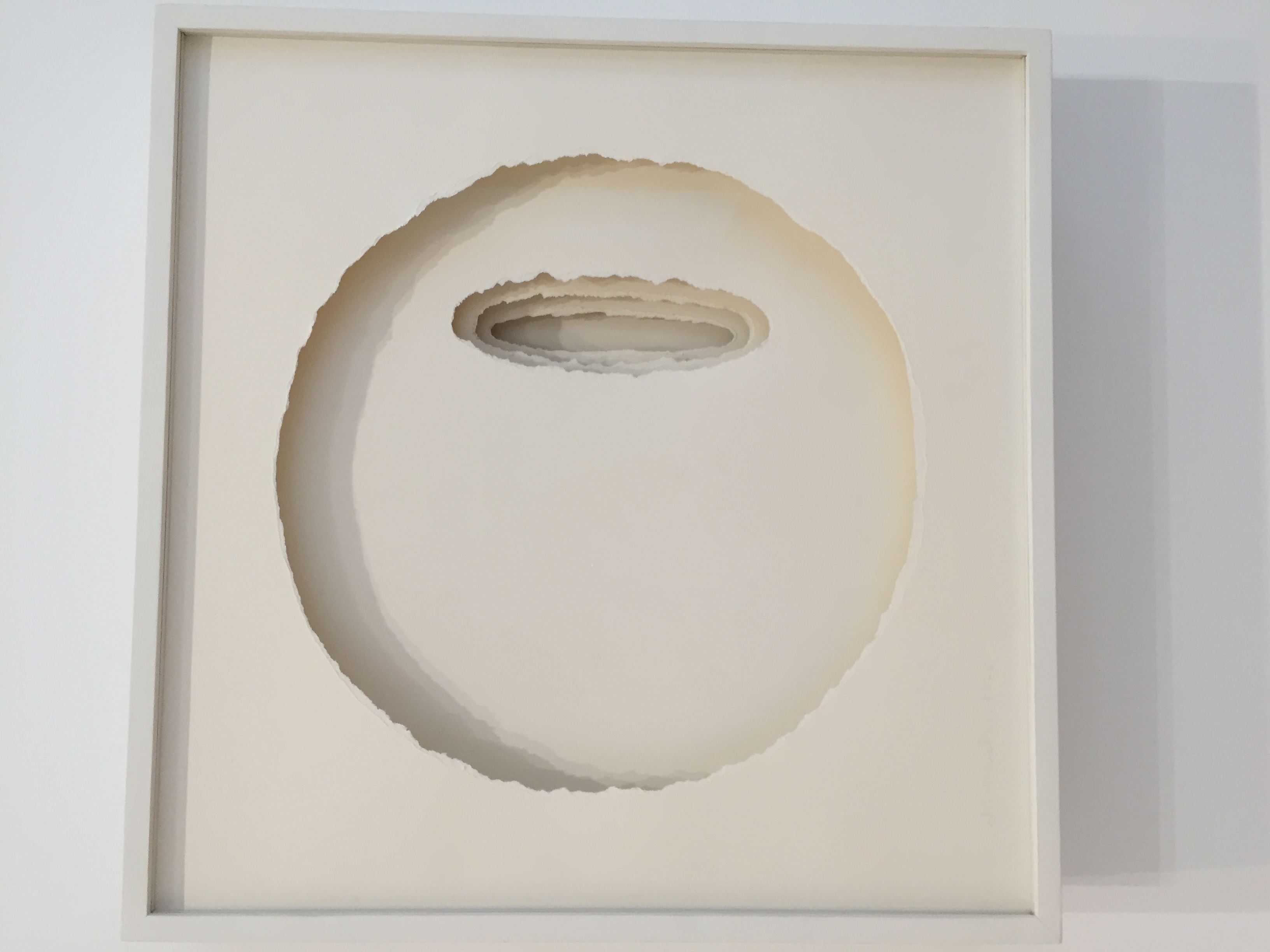This is my response to the trip that we took to see the exhibition “Cut, Folded, Pressed, and Other Actions” and the Chelsea High Line.
The exhibition “Cut, Folded, Pressed & Other Actions” consisted of works dealing with the manipulation of paper in various ways, such as tearing, puncturing, rolling, cutting and folding, as well as the use of light and shadow to create different shapes and forms. They ranged from being incredibly intricate to extremely simple and there were actually a few I found to be similar to what my partner and I were planning for our sculptures in Studio.

For example, the works that had hundreds of sheets of paper layered over one another with cut outs showing the different layers. The multiple layers create an illusion, almost as if they were pathways to a different dimension/reality – a concept we wanted to convey in a few of our sculptures. One of the sculptures we were planning was actually cutting out different shaped domes and putting them one behind other to create an illusion of growing bigger and communicate the idea of multiple realities. Overall, I found the exhibition to be quite interesting – especially the more intricate pieces, in how it showed what you can achieve with just paper, but some of the really simple pieces (e.g. the hole punching one) didn’t really resonate with me.
Moving on to the High Line, after taking in consideration the four elements of design (intricacy, centering, sun and enclosure) Jane Jacobs mentions in her book, we thought the 3 most important design elements that makes a public park successful based on the High Line are: variety, location and availability of sitting areas.
Specifically what we mean by variety is the diversity in the design of the park, such as including in different types of plants, different kinds of structures and essentially just varying the layout and architecture of the park (to the extent the structure of the railroad permits it in this case).This makes it more interesting and less monotonous, encouraging people to want to stay and continue exploring the park.
As for location, we thought that was extremely integral to the High Line’s successfulness, because its design is completely based around it. It seamlessly integrating the natural environment of the railroad’s industrial structure with plants and as it used to be a railroad, it stretches incredibly long and is located in the city between thousands of buildings. The buildings surrounding it gives the park a cosy environment, making you feel safe and secure. Moreover, while it may be surrounded by buildings, there’s still quite a bit of sun as it is both enclosed and open at the same time. You can actually see the city change as you walk through and since it puts you on eye level with the buildings as opposed to being on the ground, it draws your attention to the magnificent diversity of the architecture – something that would likely have gone amiss. The availability and amount of sitting areas is also extremely important, as it allows people to be able to leisurely spend time relaxing away from the city – one of the main purposes of a park.
Originally I considered the High Line to be successful, because it’s extremely popular and I believe parks in general are successful if people want to go there and explore or stay. However, after our class discussion where someone brought up the point about how most people were just passing through and taking pictures instead and that there weren’t really any open areas to sit and relax, I reconsidered my viewpoint slightly. As the railroad is so narrow, if it gets really crowded, then people wouldn’t be able to enjoy the environment. I don’t normally go to parks to sit and relax so I never thought about it that way, but overall I still think the High Line is successful because it is an unique type of park. It is more made for movement and although there is no center as it is a long strip park, I thought that worked because the park is located between the buildings, giving you something to look at. The park also has a lot of intricacy, with what’s visible at eye level, the metal work, stone flooring and incorporation of plants.







